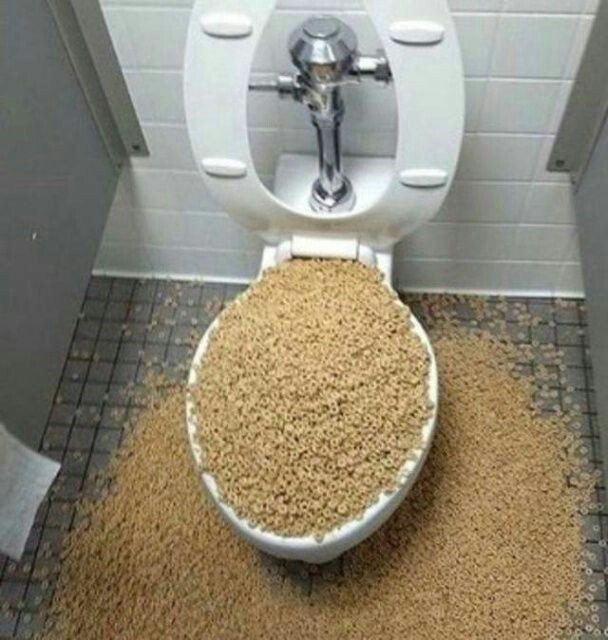Is it Allowed to Flush Food in the Toilet?
Is it Allowed to Flush Food in the Toilet?
Blog Article
The article in the next paragraphs about Think Twice Before Flushing Food Down Your Toilet is incredibly compelling. Have a go and make your own personal final thoughts.

Introduction
Lots of people are commonly confronted with the issue of what to do with food waste, specifically when it pertains to leftovers or scraps. One typical inquiry that develops is whether it's fine to flush food down the commode. In this post, we'll explore the reasons why people might take into consideration purging food, the repercussions of doing so, and alternate methods for correct disposal.
Reasons why individuals might think about purging food
Lack of recognition
Some people might not be aware of the possible harm triggered by purging food down the commode. They may erroneously believe that it's a harmless practice.
Convenience
Purging food down the bathroom might appear like a quick and very easy remedy to disposing of unwanted scraps, especially when there's no nearby trash bin offered.
Idleness
In some cases, people may just pick to flush food out of large idleness, without taking into consideration the consequences of their actions.
Effects of flushing food down the toilet
Environmental influence
Food waste that winds up in waterways can contribute to air pollution and damage marine ecosystems. Furthermore, the water made use of to purge food can stress water sources.
Pipes concerns
Flushing food can bring about blocked pipelines and drains pipes, creating pricey plumbing repair work and aggravations.
Sorts of food that should not be purged
Coarse foods
Foods with fibrous appearances such as celery or corn husks can obtain entangled in pipes and cause obstructions.
Starchy foods
Starchy foods like pasta and rice can take in water and swell, resulting in obstructions in pipes.
Oils and fats
Greasy foods like bacon or food preparation oils need to never ever be flushed down the toilet as they can solidify and create clogs.
Appropriate disposal approaches for food waste
Using a garbage disposal
For homes furnished with waste disposal unit, food scraps can be ground up and flushed through the plumbing system. Nonetheless, not all foods are suitable for disposal in this manner.
Recycling
Certain food product packaging materials can be reused, minimizing waste and lessening environmental influence.
Composting
Composting is an eco-friendly means to deal with food waste. Organic materials can be composted and utilized to improve soil for gardening.
The relevance of proper waste administration
Lowering environmental damage
Proper waste management practices, such as composting and recycling, aid minimize air pollution and protect natural resources for future generations.
Shielding plumbing systems
By preventing the method of flushing food down the bathroom, house owners can protect against pricey pipes repair work and preserve the stability of their pipes systems.
Final thought
In conclusion, while it may be tempting to flush food down the commode for convenience, it is necessary to comprehend the possible consequences of this action. By adopting correct waste management practices and getting rid of food waste properly, individuals can contribute to much healthier pipes systems and a cleaner setting for all.
THINK TWICE BEFORE FLUSHING FOOD DOWN YOUR TOILET IN FALLBROOK CA
Let’s be honest, we’re really supposed to be tossing rotten or leftover food in the compost bin or trash can. But many people like to place scraps of food down the drain of, say, their kitchen sink. That’s why the garbage disposal was invented: so we can continue to place certain foods down the drain without clogging our drain in the process. Smart.
But not all of us have the luxury of having a garbage disposal installed. So, you might continue to shove food down your sink drain anyway – or worse: you might flush them down your toilet! If you’re guilty of doing the latter, you’re going to want to stop, and here’s why:
Toilet Drains Aren’t Designed to Handle Food!
There’s your answer: food just doesn’t belong in your toilet. It may seem like your toilet drain is wider than the drains of your sinks, but truth be told, that isn’t actually the case. The narrower pipes of your toilet leave your plumbing at risk for clogging if you do happen to flush your food. In addition, food doesn’t break down as quickly that toilet paper and human waste do. In turn, this leaves your toilet at risk for a nasty clog.
Although a flush of a tiny pinch of food every now and then isn’t going to completely damage your toilet, there are certain foods that should absolutely not be flushed in your toilet at all. These include starchy foods like mashed potatoes, grains, hard pieces of food that are slow to break down, and fats and oils.
The latter categories of food are particularly problematic as they may harden, expand as they absorb water, break down slowly in your system, or generally create the perfect obstruction with their gelatinous composition. These are all things you don’t want in your plumbing system!
Experiencing a Toilet Clog?
Nobody’s perfect, and we all make mistakes. Sometimes one of the mistakes people make is flushing food down their toilet and later realizing that it wasn’t the best thing to do once they see that their toilet is now clogged. Uh-oh!

Hopefully you enjoyed our piece on . Thanks a lot for finding the time to browse our article post. You should take the time to distribute this blog post if you appreciated it. We take joy in reading our article about Flushing Food Down the Toilet?.
Estimating Report this page